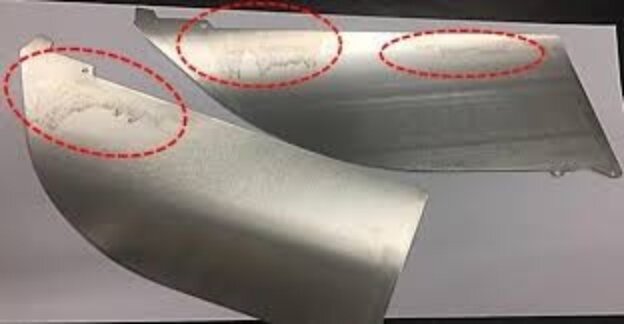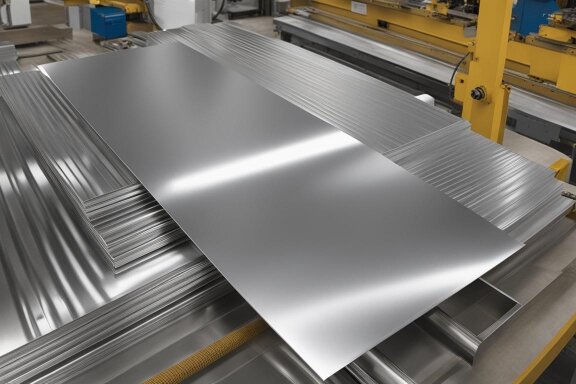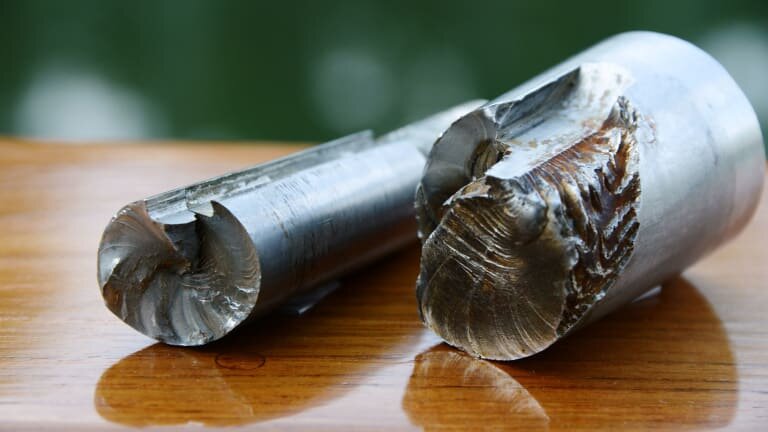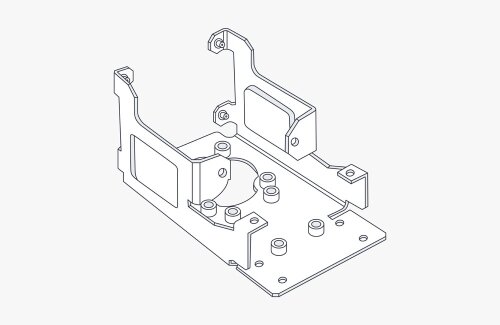يمثل تصنيع الأجزاء الدقيقة تحديات مستمرة. حيث يكافح المهندسون لتحقيق تفاوتات دقيقة للغاية مع الحفاظ على كفاءة التكلفة. وغالبًا ما يتعين على طرق التصنيع الآلي التقليدية اللحاق بالركب عند العمل مع الميزات متناهية الصغر والأشكال الهندسية المعقدة. يعالج التفريز الدقيق هذه المشاكل من خلال تمكين إنشاء مكونات معقدة بدقة استثنائية على مستوى المقياس الدقيق.
تمتد قدرات هذه التقنية إلى ما هو أبعد من طرق التصنيع التقليدية. دعنا نستكشف كيف يمكن للتفريز الدقيق أن يُحدث ثورة في عمليات التصنيع لديك ويمنحك ميزة تنافسية.
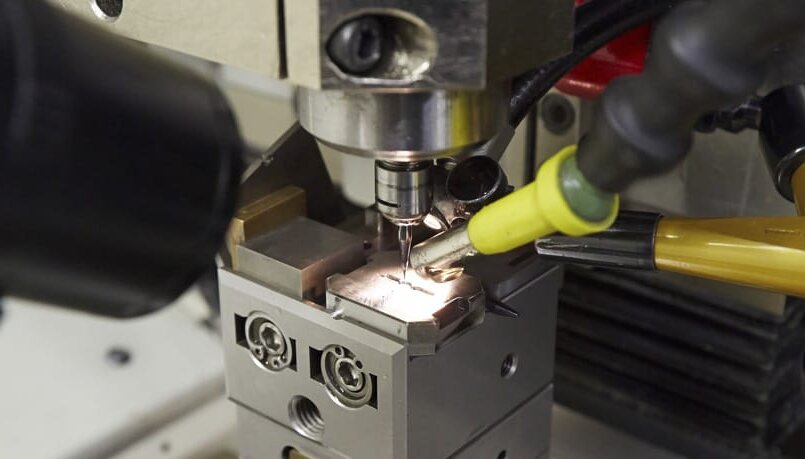
ما هو الطحن الدقيق؟
يُعد التفريز الدقيق طريقة تصنيع آلي تُنشئ ميزات مصغرة بدقة استثنائية. تستخدم هذه التقنية أدوات قطع تقاس بالميكرون لإزالة المواد بدقة. تدور هذه الأدوات بسرعات تصل إلى 150,000 دورة في الدقيقة أو أعلى. تُنشئ هذه العملية ميزات صغيرة للغاية مع تفاوتات تفاوتات تقاس بالميكرون.
الفرق الأساسي بين الطحن الدقيق و الطحن التقليدي تكمن في الحجم والدقة. في حين أن التفريز القياسي يعمل بشكل جيد مع القِطع الأكبر حجمًا، فإن التفريز الدقيق يتألق عند صناعة المكونات التي تتطلب تفاصيل دقيقة للغاية. تعمل الأدوات والسرعات وأنظمة التحكم بشكل أكثر دقة بكثير.
كل عملية قطع تزيل كميات ضئيلة من المواد بتحكم دقيق. توجه أنظمة الماكينات بنظام التحكم الرقمي الحديثة هذه الحركات الدقيقة من خلال البرامج المتقدمة والتحكم في الحركة. وينتج عن ذلك تشطيبات سطحية ناعمة وتفاصيل دقيقة تلبي معايير الجودة الصارمة.
العلم وراء الطحن الدقيق
تختلف فيزياء القطع على المستوى الميكروسكوبي عن التصنيع الآلي التقليدي. تتفاعل خصائص المواد وديناميكيات الأداة ودقة الماكينة بطرق معقدة على هذا المستوى.
ماكينات التفريز الدقيقة: نظرة عامة تقنية
تجمع ماكينات التفريز الدقيقة الحديثة دقة مذهلة في حزم مدمجة. تدمج هذه الأنظمة مفاهيم التصنيع الآلي التقليدية مع أحدث أنظمة التحكم في الحركة والمراقبة، مما يوسع من قدراتها إلى ما هو أبعد من معدات التفريز التقليدية.
المكونات الأساسية لماكينات التفريز الدقيقة
يرتكز قلب نظام التفريز الدقيق على تصميم عمود الدوران الخاص به. تقلل أعمدة الدوران الحاملة للهواء من الاهتزاز أثناء الوصول إلى سرعات أعلى من 150,000 دورة في الدقيقة. تقوم المشفرات عالية الدقة بتتبع الموضع حتى مستويات النانومتر. تمتص قواعد الجرانيت الاهتزازات وتحافظ على الاستقرار الحراري.
الميزات الرئيسية التي تمكّن الدقة المتناهية الصغر
تحافظ أنظمة الثبات الحراري على درجات حرارة ثابتة طوال فترة التشغيل. تمتص قواعد الجرانيت الاهتزازات، بينما تراقب أنظمة التغذية الراجعة المتقدمة كل جانب من جوانب عملية القطع. تحدث التعديلات في الوقت الحقيقي تلقائياً، مما يضمن نتائج متسقة.
أدوات ومواد الطحن الدقيق
يعتمد النجاح في الطحن الدقيق على اختيار الأدوات والمواد المناسبة. يتطلب كل تطبيق تركيبات محددة للحصول على أفضل النتائج.
أدوات القطع المتخصصة
- ماكينات التفريز الطرفية الكربيدية (قطر 0.1 مم - 1 مم)
- أدوات مطلية بالماس للمواد الصلبة
- تصميمات هندسية مخصصة لميزات محددة
- أدوات الأنف الكروية للأسطح ثلاثية الأبعاد
- طلاءات خاصة لمقاومة التآكل
المواد المناسبة لتطبيقات الطحن الدقيق
تشمل المواد الشائعة ما يلي:
- سبائك الألومنيوم
- تيتانيوم من الدرجة الطبية
- اللدائن الهندسية
- النحاس الأصفر والنحاس
- فولاذ الأدوات
التقنيات والمنهجيات
يتطلب إتقان الطحن الدقيق معرفة تقنية عميقة مقترنة بخبرة عملية. تتطلب العملية اهتمامًا دقيقًا بالمتغيرات المتعددة.
معلمات العملية الرئيسية في الطحن الدقيق
يجب أن تأخذ حسابات سرعة القطع في الحسبان قطر الأداة وخصائص المواد - معدلات التغذية توازن بين إزالة المواد وعمر الأداة. من أجل الثبات، يظل عمق القطع متناسبًا مع حجم الأداة.
استراتيجيات متقدمة لتحقيق أفضل النتائج
يقلل تخطيط مسار الأدوات من انحراف الأداة ويحافظ على أحمال البُرادة متسقة. تقلل استراتيجيات التصنيع الآلي عالي السرعة من قوى القطع. يحمي اختيار سائل التبريد وطرق التوصيل كلاً من الأداة وقطعة العمل.
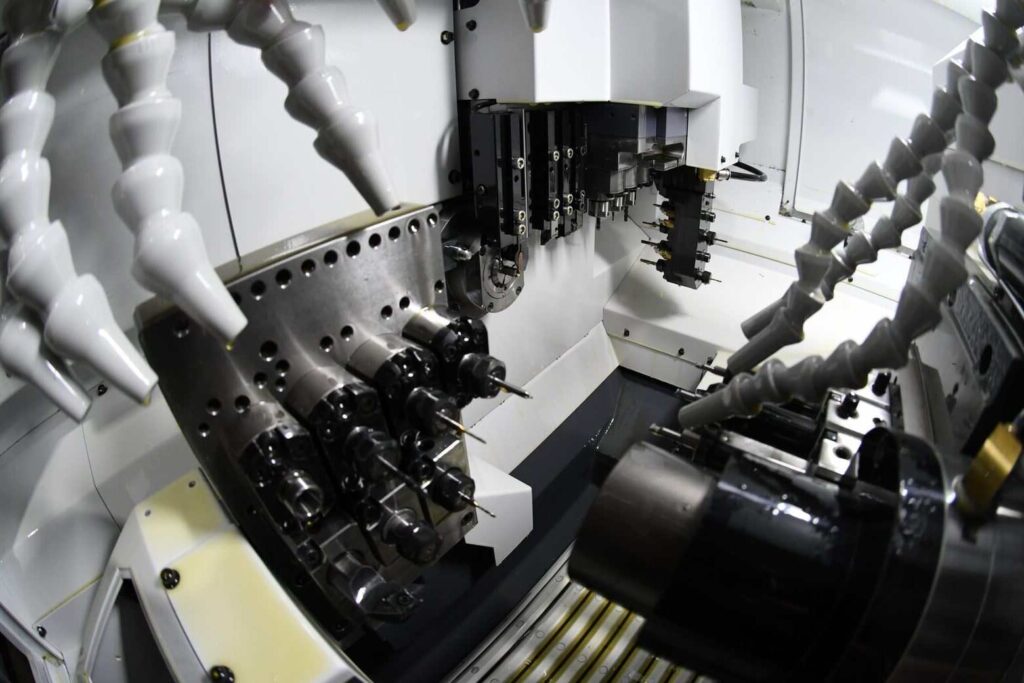
ما هي الاختلافات الرئيسية بين الطحن الدقيق والطحن بالنانو؟
يحدد الحجم والدقة الحدود بين عمليات الطحن الدقيقة والنانو. تخدم كل عملية احتياجات تصنيع متميزة وتعمل بمقاييس مختلفة. يساعد فهم هذه الاختلافات في اختيار الطريقة المناسبة لتطبيقات محددة.
تعمل عملية التفريز الدقيق في نطاق الميكرومتر، وعادةً ما تعمل مع ميزات تتراوح من 1 إلى 999 ميكرومتر. تستخدم العملية أدوات القطع المادية لإزالة المواد. تصل التفاوتات القياسية إلى ± 2 - 5 ميكرومتر مع خشونة السطح حوالي 0.1-0.3 ميكرومتر.
وتنتقل عملية الطحن بالنانو إلى ما هو أصغر من ذلك، حيث تتعامل مع ميزات أقل من 100 نانومتر. وغالباً ما تستخدم هذه العملية مبادئ فيزيائية مختلفة. فبدلاً من القطع التقليدي، قد يستخدم الطحن النانوي أشعة أيونية مركزة أو طرق كيميائية. تتقلص التفاوتات إلى مقاييس النانومتر.
يمثل تعشيق الأداة فرقًا حاسمًا. يستخدم الطحن الدقيق أدوات القطع الصلبة التي تلامس قطعة العمل ماديًا. يعتمد الطحن النانوي في كثير من الأحيان على طرق عدم التلامس مثل حزم الجسيمات أو التفاعلات الكيميائية لتحقيق إزالة المواد.
تختلف التطبيقات بشكل كبير بين هذه التقنيات. ينتج الطحن الدقيق الأجزاء الميكانيكية الصغيرة والقوالب والأجهزة الطبية بينما ينتج الطحن الدقيق مكونات أشباه الموصلات والأجهزة الكمية والمواد البحثية المتقدمة.
كما تتباين متطلبات المعدات أيضًا. يستخدم التفريز الدقيق ماكينات CNC دقيقة في بيئات نظيفة، بينما يتطلب التفريز الدقيق ظروف غرف نظيفة ومعدات متخصصة مثل المجاهر الإلكترونية أو أنظمة الأشعة الأيونية.
مزايا الطحن الدقيق
تجلب طريقة التصنيع هذه قدرات قوية للإنتاج الحديث. وفوائدها واضحة عند مقارنتها بعمليات التصنيع الأخرى.
دقة ودقة محسّنة
يحقق التفريز الدقيق تحكمًا ملحوظًا في الأبعاد أثناء إنتاج القِطع. تصل تشطيبات السطح إلى جودة تشبه المرآة بقيم Ra أقل من 0.1 ميكرومتر. تتطابق أحجام الميزات مع مواصفات التصميم بمساعدة الحاسوب في حدود ميكرون.
إزالة المواد المتحكم فيها تنتج زوايا حادة وحواف نظيفة. تظل سماكة الجدار متناسقة حتى 50 ميكرومتر، وتحافظ الأشكال الهندسية المعقدة ثلاثية الأبعاد على الدقة في كامل شكلها.
تحتاج العديد من القِطع إلى الحد الأدنى من المعالجة اللاحقة. تعمل المعالجة الآلية المباشرة على إنشاء أسطح جاهزة للاستخدام، مما يقلل من وقت المعالجة ويحافظ على دقة الأبعاد.
كفاءة التكلفة والوقت
يقلل التصنيع الآلي المباشر من العمليات الثانوية والتكاليف المرتبطة بها. تقلل المعالجة أحادية الإعداد بشكل كبير من وقت الإنتاج. تعمل الأنظمة الآلية بشكل مستمر مع الحد الأدنى من تدخل المشغل.
من خلال البرمجة المبسطة, النماذج الأولية السريعة تصبح أسرع. تترجم تغييرات التصميم بسرعة إلى أجزاء محدثة، مما يسرع من دورات تطوير المنتج.
تعدد الاستخدامات عبر المواد
يتعامل الطحن الدقيق مع المعادن والبلاستيك والسيراميك والمواد المركبة بفعالية. يمكن التنبؤ بكل نوع من أنواع المواد باستخدام المعلمات المناسبة. تدعم هذه المرونة احتياجات التصنيع المتنوعة.
تُنشئ العملية أشكالاً هندسية بسيطة ومعقدة بدقة متساوية. تتشكل الميزات الداخلية بدون إعدادات أو عمليات خاصة. تحقق التشطيبات السطحية المتعددة متطلبات وظيفية محددة.
ما مدى عمق الطحن الدقيق؟
بالنسبة لمعظم التطبيقات، يحقق الطحن الدقيق نسب أبعاد تتراوح بين 3:1 و5:1. وهذا يعني أن الأداة التي يبلغ قطرها 100 ميكرون تقطع عادةً ميزات بعمق 300 إلى 500 ميكرون. قد يؤدي تجاوز هذه النسب إلى مخاطر كسر الأداة ومشاكل الجودة.
يصبح انحراف الأداة حرجًا مع زيادة العمق. الأدوات الأصغر تنثني أكثر تحت قوى القطع. قد تحد الأداة التي يبلغ عمقها 50 ميكرون من العمق إلى 150 ميكرون للقطع المستقر. يمكن أن تصل الأدوات الدقيقة الأكبر حجمًا التي يبلغ حجمها حوالي 500 ميكرون إلى أعماق تصل إلى 2.5 ملليمتر.
تطبيقات الطحن الدقيق
يؤدي الطحن الدقيق أدوارًا مهمة في قطاعات التصنيع المتقدمة. تخلق هذه التقنية مكونات تعمل على تشغيل العلاجات الطبية الحديثة والإلكترونيات والمركبات. تدفع كل صناعة حدود ما يمكن أن يحققه الطحن الدقيق. إليك كيفية استفادة القطاعات المختلفة من هذه التقنية.
الطحن الدقيق في الصناعة الطبية
يتطلب التصنيع الطبي دقة لا تشوبها شائبة من أجل سلامة المرضى. تظهر المكونات المطحونة الدقيقة في الأدوات الجراحية والغرسات ومعدات التشخيص. وغالباً ما تتفاعل هذه الأجزاء مباشرةً مع الأنسجة البشرية، مما يتطلب جودة سطح استثنائية.
تُظهر غرسات الأسنان قدرات الطحن الدقيقة من خلال أنماط الخيوط الدقيقة. تتميز مسامير العظام بأنماط سطحية معقدة تعزز الالتئام. تُظهر مكونات المعينات السمعية قدرة التكنولوجيا على العمل مع المواد المتوافقة حيوياً.
الإلكترونيات والطحن الدقيق
تعتمد الإلكترونيات الحديثة على المكونات المدمجة بشكل متزايد. تُستخدم الأجزاء المضروبة الدقيقة في إنتاج لوحات الدارات الكهربائية ومعدات الاختبار. تخلق العملية أغلفة دقيقة للمكونات الإلكترونية الحساسة.
تستفيد المشتتات الحرارية من أنماط الأسطح المضروبة الدقيقة التي تزيد من كفاءة التبريد في المساحات المدمجة. تتطلب قوالب الموصلات الدقيقة ذات الملعب الدقيق تفاوتات دقيقة للحصول على وظيفة مناسبة.
تطبيقات الفضاء والسيارات
تتطلب مكونات الفضاء الجوي كلاً من الدقة والموثوقية. تظهر الأجزاء المضروبة بدقة متناهية في أنظمة حقن الوقود وأغلفة المستشعرات. يجب أن تعمل هذه المكونات بشكل لا تشوبه شائبة في ظل ظروف قاسية.
تحتوي حساسات السيارات على عناصر مصقولة بدقة متناهية لتحديد المواقع بدقة، وتستفيد مكونات نظام الوقود من التشطيبات السطحية الدقيقة. تدعم العملية كلاً من تطوير النماذج الأولية وعمليات الإنتاج.
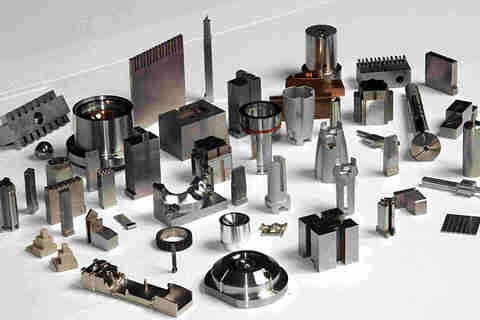
خاتمة
يعيد الطحن الدقيق تشكيل التصنيع من خلال تمكين إنتاج مكونات متناهية الصغر متزايدة التعقيد. تعمل هذه التقنية على سد الفجوات الحرجة بين مفاهيم التصميم والواقع المادي، ويتزايد تأثيرها مع اتجاه الصناعات نحو إنتاج أجزاء أصغر وأكثر دقة.
تكتسب فرق التصنيع مزايا قوية من خلال قدرات الطحن الدقيق. وتوفر هذه العملية دقة لا مثيل لها مع الحفاظ على كفاءة الإنتاج، وهو ما يثبت قيمته في القطاعات الطبية والإلكترونية والفضائية.
هل تريد استكشاف كيف يمكن للطحن الدقيق تحسين مشروعك القادم؟ يتمتع فريقنا الهندسي بخبرة 10 سنوات من الخبرة في التصنيع الدقيق. شارك متطلبات مشروعك معنا، وسيقدم فريقنا عرض أسعار مفصلاً في غضون 24 ساعة. سنرشدك خلال فرص تحسين التصميم مع التركيز على احتياجاتك الخاصة.
مهلا، أنا كيفن لي

على مدى السنوات العشر الماضية، كنت منغمسًا في أشكال مختلفة من تصنيع الصفائح المعدنية، وشاركت رؤى رائعة هنا من تجاربي عبر ورش العمل المتنوعة.
ابقى على تواصل

كيفن لي
لدي أكثر من عشر سنوات من الخبرة المهنية في تصنيع الصفائح المعدنية، وتخصصت في القطع بالليزر، والثني، واللحام، وتقنيات معالجة الأسطح. كمدير فني في شنغن، أنا ملتزم بحل تحديات التصنيع المعقدة ودفع الابتكار والجودة في كل مشروع.

